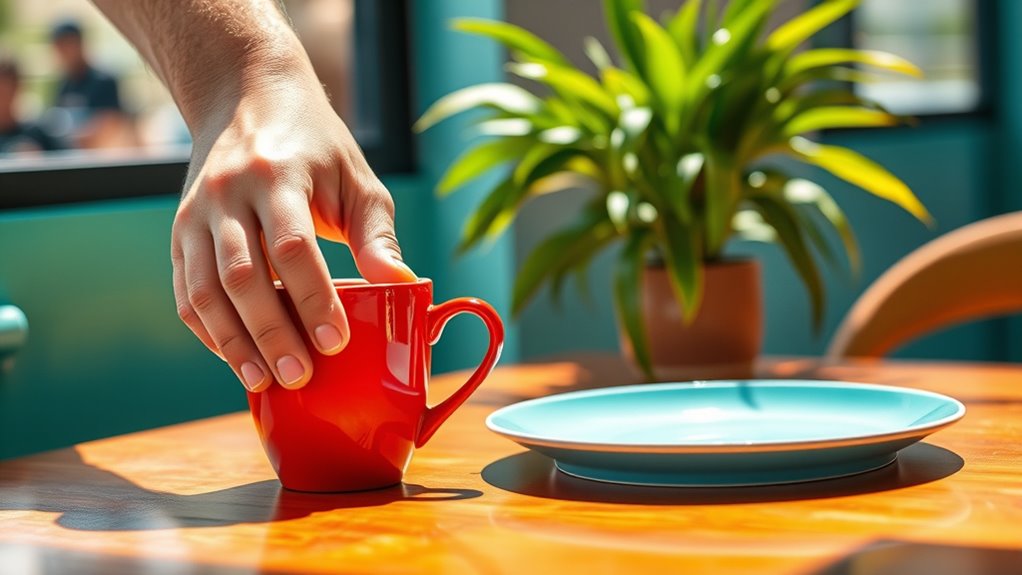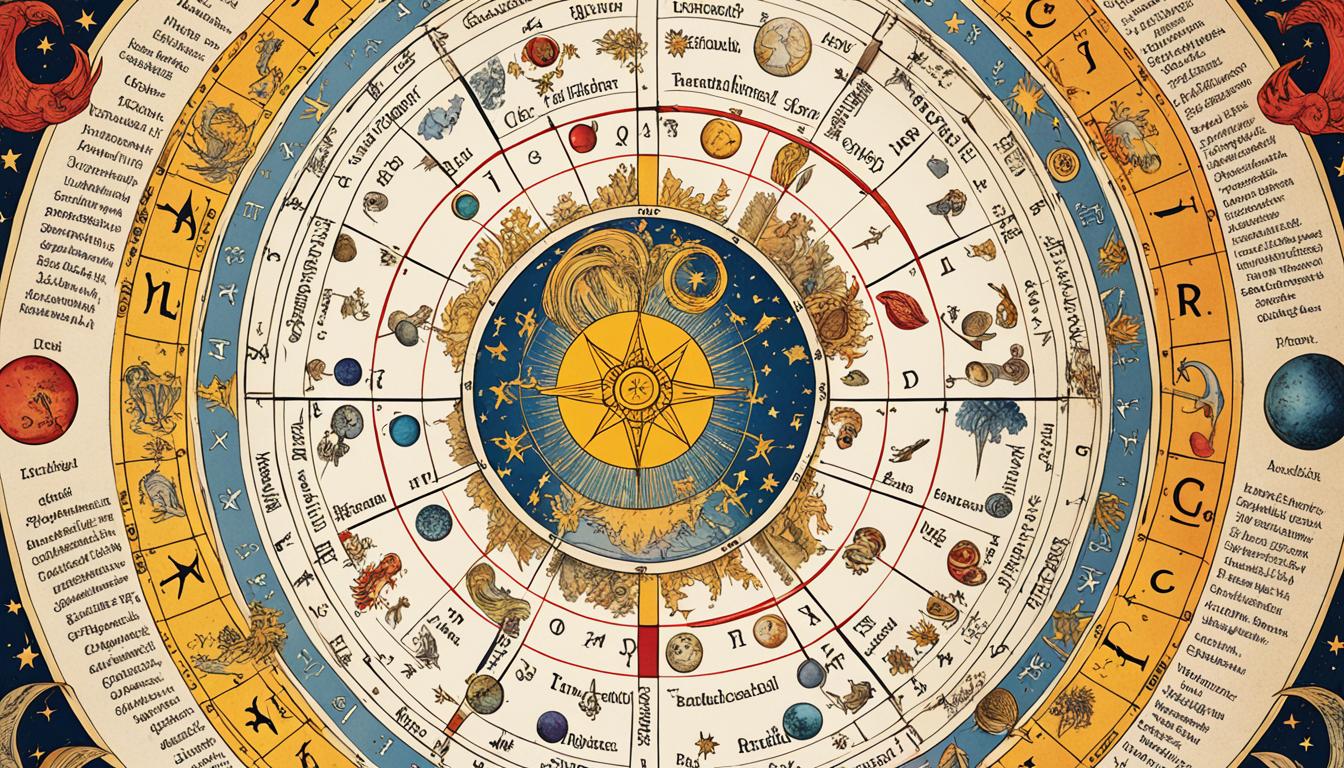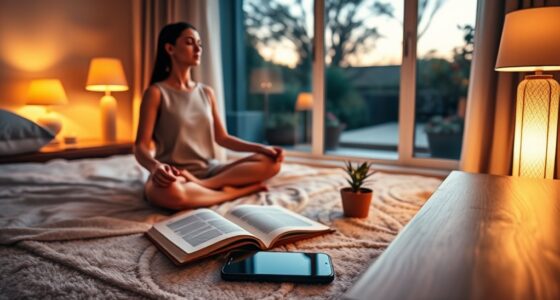Colors subtly influence your perceptions and decisions every day, often without you noticing. Bright reds and oranges can boost excitement and prompt quick choices, while calming greens and blues promote relaxation. Your emotional responses to colors shape how you view environments and make decisions, from shopping to personal style. Recognizing these hidden cues can help you use color intentionally to improve your mood and choices. If you keep exploring, you’ll discover how to harness this powerful psychological effect.
Key Takeaways
- Colors influence perceptions and emotions subtly, guiding choices without conscious awareness.
- Retail environments use specific colors to evoke emotions and prompt decisions, like red for urgency.
- Warm hues boost energy and optimism, while cool tones promote relaxation, affecting mood and behavior.
- Color associations and personal memories reinforce repeated choices and emotional responses.
- Understanding color psychology allows deliberate design of environments to improve decision-making and mood.

Colors influence your decisions more than you might realize, shaping perceptions and guiding choices in subtle ways. When you see a vibrant red sign or a calming blue shirt, your brain instantly interprets these hues, affecting your emotional state and how you perceive the situation. This process, known as color perception, plays a pivotal role in your everyday decision-making, often without your conscious awareness. The emotional impact of different colors can evoke specific feelings—red might energize you or increase your sense of urgency, while green can evoke calmness and reassurance. Recognizing how these associations work helps you understand why certain colors attract your attention or influence your mood.
For example, in retail environments, businesses carefully select colors to steer your behavior. Bright reds and oranges tend to stimulate excitement and encourage quick decisions, which is why they’re common in clearance sales or fast-food logos. Conversely, softer pastel shades in a spa or wellness center aim to promote relaxation, making you more receptive to calming services or products. Your perception of a space or product is heavily colored by these visual cues, which tap into your emotional responses. When you walk into a room painted in warm hues, you might feel more energized and optimistic, whereas cooler tones can make you feel more relaxed or even subdued. This emotional impact influences not just how you feel but also how you decide to act within that environment.
Your personal preferences and experiences further shape how color perception influences your choices. For instance, if you associate a particular color with positive memories—like wearing a favorite blue shirt that reminds you of a happy moment—you’re more likely to choose it again. Conversely, if a color has negative connotations, you might avoid it altogether. This interplay between emotion and perception highlights how deeply your subconscious responds to color cues. The emotional impact of color isn’t just about aesthetics; it’s a powerful subconscious driver that guides your decisions, from the clothes you buy to the brands you trust.
Understanding the psychology behind color perception empowers you to make more deliberate choices. Whether you’re designing a workspace, selecting an outfit, or choosing a brand, being aware of how colors influence your emotional responses helps you align your environment with your goals. Ultimately, the subtle power of color shapes your perceptions and decisions every day, often in ways you don’t even realize. Recognizing this influence allows you to harness it intentionally, creating environments and choices that positively affect your mood and behavior.
Frequently Asked Questions
How Do Cultural Differences Influence Color Perception?
Cultural differences greatly influence how you interpret colors through cultural symbolism and color interpretation. In some cultures, white signifies purity, while in others, it represents mourning. Your perception of colors is shaped by these cultural meanings, affecting your emotional response and decision-making. Recognizing these differences helps you understand that color perceptions are not universal but deeply rooted in cultural context, guiding your reactions and preferences accordingly.
Can Color Therapy Impact Mental Health?
Color therapy can be a game-changer for your mental health. You might not believe it, but it’s proven to boost your mood and reduce stress. The color therapy benefits include promoting relaxation and emotional balance, leading to noticeable mental health improvements. By incorporating specific colors into your environment or practice, you can harness their power to support your well-being and feel more centered every day.
Do Colors Affect Consumer Trust Differently Across Industries?
Colors influence consumer trust differently across industries by triggering emotional responses that impact brand loyalty. For example, blue often fosters trust in finance, while red can evoke urgency in retail. You should consider how color choices align with your industry’s message, as they shape perceptions and emotional connections. When used strategically, color enhances trust, strengthens brand loyalty, and encourages customers to choose your brand over competitors.
How Does Color Choice Influence Online User Experience?
Color choice greatly influences your online user experience by shaping perceptions and guiding actions. Through color psychology, you can evoke emotions and build trust quickly. Effective visual branding uses strategic colors to enhance readability, create a welcoming atmosphere, and encourage engagement. When you select colors thoughtfully, you improve navigation and user satisfaction, making your website more memorable and effective in achieving your goals.
Are There Individual Personality Traits Linked to Color Preferences?
Did you know that studies show people with high openness tend to prefer vibrant colors? Your personality color connection influences your individual preference patterns, shaping how you choose colors across your life. If you’re more extroverted, you might favor bold hues, while introverts often prefer softer shades. Understanding this link helps reveal why you’re drawn to certain colors, making your choices feel more personal and meaningful.
Conclusion
Now that you understand how colors whisper secrets to your mind, you can start noticing their subtle influence in your daily choices. Like a painter’s brush, color adds depth and emotion to your decisions, often guiding you without you realizing it. So, next time you’re faced with a choice, pay attention to the hues surrounding you—they might just be the silent puppeteers pulling your strings, shaping your perceptions in ways you never imagined.









